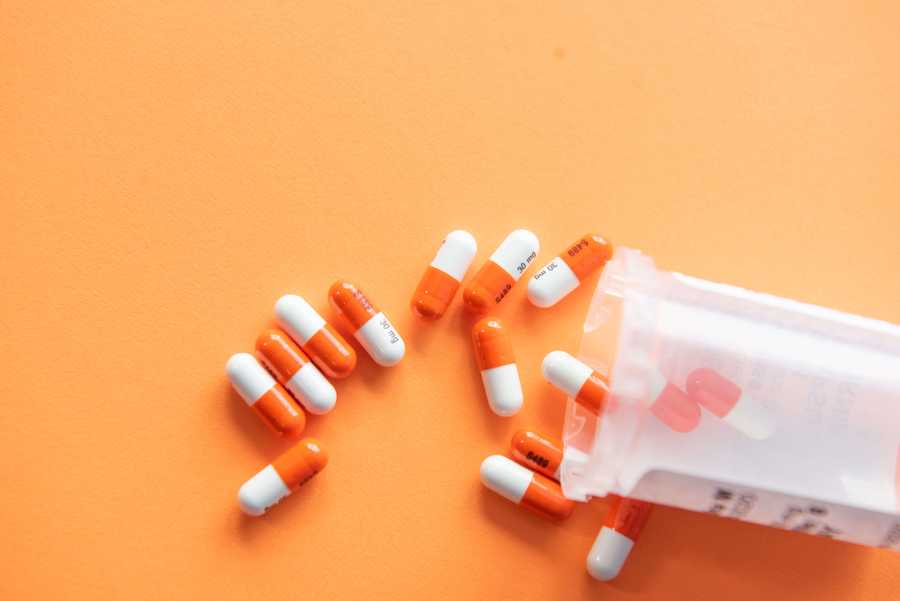How to Protect Your Gut Health While on Antibiotics
by Amylee Amos PhD, RDN, IFMCPLifestyle
The Controversy Regarding Antibiotics
Antibiotics are a class of drug that treat infections caused by bacteria. The discovery of antibiotics was a monumental turning point in medical history. Diseases that had devastated societies could suddenly be managed swiftly and effectively. There is no doubt that antibiotics are lifesaving, yet today they are widely overused in conventional medicine. Oftentimes, antibiotics are prescribed in low acuity cases when the source of infection is not even known to be bacterial, meaning that the antibiotics are inappropriately used and not needed in the first place. The problem with this is that we are overexposed to antibiotics. Whether it’s an antibiotic that we are taking ourselves, or secondary exposure to antibiotics through consumption of conventional animal foods in which the animal has been prophylactically fed antibiotics, the overuse of antibiotics results in widespread health issues. Antibiotic use results in the formation of toxic reactive oxygen species, mitochondrial dysfunction, and oxidative damage to cells and tissues of multiple body organs (1). Beyond these problems, the two primary issues that result from antibiotic use include the rise of antibiotic-resistant strains of bacteria and the modification of the microbiome, both on an individual and global level.
Despite the fact that antibiotics are now overused, they are sometimes absolutely critical to take. Practitioners often prescribe broad-spectrum antibiotics when bacteria are implicated in an illness. Some of these include tetracycline, ampicillin, clindamycin, and others. As their name suggests, these antibiotics kill off a wide range of pathogens, which can be helpful in a hard to treat infection, but it also means that they have the ability to kill off the healthy bacteria that live in our gut. While a “core” species of gut bacteria are likely resilient with regard to antibiotic use, research shows that from even taking a short course of antibiotics there is an immediate reduction in microbial diversity. Even more shocking, this change in microbial composition may be permanent following a course of antibiotics, or at the very least, the microbial communities likely do not resemble their pre-antibiotic state for up to 12 months following the course of antibiotics (2).
The long term implications of changes to the gut microbial community following antibiotic use are significant. Some of these include increased risk of metabolic diseases such as type 2 diabetes and increased risk of immune diseases including inflammatory diseases and autoimmune diseases. This is unsurprising given the impact of gut health on the body as a whole.
How to Protect Your Gut When Taking Antibiotics
Thus, the question becomes, how do we protect the health of our gut (and in turn, our whole body) if we genuinely need antibiotics?
The first thing most people consider is probiotic use. Some strains of probiotics are resistant to some of the most common antibiotics that are prescribed. However, certain broad-spectrum antibiotics such as amoxicillin, penicillin, and ampicillin can render probiotic therapy inert, depending on the strain used. Instead of a standard probiotic, if you are taking antibiotics, do the following:
Choose a multi-strain probiotic that contains Saccharomyces boulardii
S. boulardii can offset the harmful dysbiosis brought on by taking the antibiotic by coating the gut with this antibiotic resistant yeast species.
Take the probiotic supplement 2 hours after taking a dose of the antibiotic
This is believed to be the best way to limit the susceptibility of the probiotic.
Following your course of antibiotics, continue to take a multi-strain antibiotic with at least 20-40 billion CFU
This dose has been shown effective at managing and optimizing the microflora of the gut. Ideally, this should be taken before or after a meal, though probiotic timing is under-researched and at this point inconclusive.
Following your course of antibiotics, consume foods rich in prebiotics and probiotics
Prebiotics are complex carbohydrates that humans lack the enzymes to breakdown, which allows the healthy microbes of the gut to consume them (to the benefit of the human!). Simply consuming a diet rich in diverse plant foods (such as the Ketoflex 12/3 Nutrition Plan) allows for adequate consumption of prebiotics. However, certain vegetables including jicama, Jerusalem artichoke, asparagus, onions, and garlic are especially high in prebiotic fiber.
Probiotic foods include those that have been fermented, either through spontaneous fermentation (such as by fermenting your own vegetables) or through a starter, as with sourdough bread or kombucha. Fermented foods have tremendous health benefits and should be prioritized following the completion of a course of antibiotics as further means of repopulating the gut with healthy microbes.
Currently, there is no evidence that suggests that taking a probiotic alters the effectiveness of the antibiotic. Thus, you can feel safe knowing that if take a probiotic supplement such as that outlined above, you are likely mitigating the harmful effects of the antibiotics, while still allowing it to fully work to kill off the harmful pathogens making you sick (2).
References:
- Kalghatgi, S., Spina, C. S., Costello, J. C., Liesa, M., Morones-Ramirez, J. R., Slomovic, S., Molina, A., Shirihai, O. S., & Collins, J. J. (2013). Bactericidal antibiotics induce mitochondrial dysfunction and oxidative damage in Mammalian cells. Science translational medicine, 5(192), 192ra85. https://doi.org/10.1126/scitranslmed.3006055
- Guilliams, T.G. (2016). Functional strategies for the management of gastrointestinal disorders: Principles and protocols for healthcare professionals. Stevens Point, WI: Point Institute. ISBN: 978-0-9856158-3-3